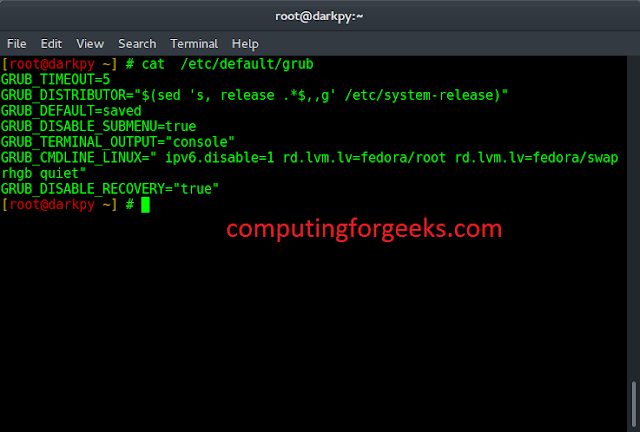Given a singly linked list, rotate the linked list counter-clockwise by k nodes. Where k is a given positive integer. For example, if the given linked list is 10->20->30->40->50->60 and k is 4, the list should be modified to 50->60->10->20->30->40. Assume that k is smaller than the count of nodes in a linked list.
Method 1:
To rotate the linked list, we need to change the next of kth node to NULL, the next of the last node to the previous head node, and finally, change the head to (k+1)th node. So we need to get hold of three nodes: kth node, (k+1)th node, and last node.
Traverse the list from the beginning and stop at kth node. Store pointer to kth node. We can get (k+1)th node using kthNode->next. Keep traversing till the end and store a pointer to the last node also. Finally, change pointers as stated above.
Below image shows how to rotate function works in the code :
Javascript
<script>// Javascript program to rotate // a linked list// Head of listvar head; // Linked list Node class Node { constructor(val) { this.data = val; this.next = null; }}// This function rotates a linked list // counter-clockwise and updates the head. // The function assumes that k is smaller // than size of linked list. It doesn't // modify the list if k is greater than // or equal to sizefunction rotate(k) { if (k == 0) return; // Let us understand the below code // for example k = 4 and list = // 10->20->30->40->50->60. var current = head; // current will either point to kth or // NULL after this loop. current will // point to node 40 in the above example var count = 1; while (count < k && current != null) { current = current.next; count++; } // If current is NULL, k is greater than // or equal to count of nodes in linked list. // Don't change the list in this case if (current == null) return; // current points to kth node. Store it in // a variable. kthNode points to node 40 // in the above example var kthNode = current; // current will point to last node after // this loop current will point to node // 60 in the above example while (current.next != null) current = current.next; // Change next of last node to previous // head Next of 60 is now changed to // node 10 current.next = head; // Change head to (k+1)th node // head is now changed to node 50 head = kthNode.next; // change next of kth node to null kthNode.next = null;}/* Given a reference (pointer to pointer) to the head of a list and an int, push a new node on the front of the list. */ function push(new_data) {/* 1 & 2: Allocate the Node & Put in the data */var new_node = new Node(new_data);// 3. Make next of new Node as head new_node.next = head;// 4. Move the head to point to new Node head = new_node;}function printList() { var temp = head; while (temp != null) { document.write(temp.data + " "); temp = temp.next; } document.write("<br/>");}// Driver code// Create a list // 10->20->30->40->50->60for (i = 60; i >= 10; i -= 10) push(i);document.write("Given list<br/>");printList();rotate(4);document.write("Rotated Linked List<br/>");printList();// This code is contributed by todaysgaurav</script> |
Output:
Given linked list 10 20 30 40 50 60 Rotated Linked list 50 60 10 20 30 40
Time Complexity: O(n) where n is the number of nodes in Linked List. The code traverses the linked list only once.
Please write comments if you find anything incorrect, or you want to share more information about the topic discussed above.
Method 2:
To rotate a linked list by k, we can first make the linked list circular and then moving k-1 steps forward from head node, making (k-1)th node’s next to null and make kth node as head.
Javascript
<script>// Javascript program to rotate// a linked list counter clock wise// Link list node class Node { constructor() { this.data = 0; this.next = null; }}var head = null;// This function rotates a linked list// counter-clockwise and updates the// head. The function assumes that k is// smaller than size of linked list.function rotate(k) { if (k == 0) return; // Let us understand the below // code for example k = 4 and // list = 10.20.30.40.50.60. var current = head; // Traverse till the end. while (current.next != null) current = current.next; current.next = head; current = head; // Traverse the linked list to // k-1 position which will be // last element for rotated array. for (i = 0; i < k - 1; i++) current = current.next; // update the head_ref and last // element pointer to null head = current.next; current.next = null;}// UTILITY FUNCTIONS // Function to push a node function push(new_data) { // Allocate node var new_node = new Node(); // Put in the data new_node.data = new_data; // Link the old list of the // new node new_node.next = head; // Move the head to point to the // new node head = new_node;}// Function to print linked list function printList( node) { while (node != null) { document.write(node.data + " "); node = node.next; }}// Driver code // Start with the empty list // Create a list 10.20.30.40.50.60for (i = 60; i > 0; i -= 10) push(i);document.write("Given linked list <br/>");printList(head);rotate(4);document.write("<br/>Rotated Linked list <br/>");printList(head);// This code is contributed by aashish1995</script> |
Output:
Given linked list 10 20 30 40 50 60 Rotated Linked list 50 60 10 20 30 40
Please refer complete article on Rotate a Linked List for more details!
Ready to dive in? Explore our Free Demo Content and join our DSA course, trusted by over 100,000 neveropen!





